Cobalt Blue Tarantula
- March 13, 2024
- 0 comment
The Cobalt Blue Tarantula, scientifically known as Haplopelma lividum, is a stunning species of tarantula originating from the dense rainforests of Southeast Asia, particularly Thailand. Renowned for its striking appearance, this tarantula boasts a vibrant cobalt-blue hue that mesmerizes enthusiasts and collectors alike. With a robust body covered in dense, velvety blue hairs and contrasting black markings, it’s a sight to behold. In its natural habitat, the Cobalt Blue Tarantula inhabits burrows dug into the forest floor, preferring humid environments with ample hiding spots.

While their aggressive nature and potent venom make them unsuitable for handling, they are fascinating creatures to observe in captivity. Providing a secure enclosure with appropriate substrate, maintaining optimal temperature and humidity levels, and offering a varied diet of insects are essential for their well-being. Despite misconceptions about their temperament, Cobalt Blue Tarantulas play a vital role in their ecosystems and are subject to conservation efforts to ensure their survival.
| Specification | Details |
|---|---|
| Scientific Name | Haplopelma lividum |
| Common Name | Cobalt Blue Tarantula |
| Origin | Southeast Asia, particularly Thailand |
| Size | Adult females: 4 to 5 inches |
| Adult males: slightly smaller | |
| Coloration | Vibrant cobalt-blue with black markings |
| Habitat | Dense rainforests, deciduous forests |
| Distribution | Mainly found in Thailand |
| Preferred Environment | Humid environments with ample hiding spots |
| Burrowing Behavior | Inhabits burrows dug into forest floor |
| Diet | Insects and small arthropods in the wild |
| Captive diet: crickets, mealworms, feeder | |
| roaches | |
| Handling | Not recommended due to aggressive nature |
| and potent venom | |
| Conservation Status | Not currently listed as endangered |
| Threatened by habitat destruction and illegal | |
| collection | |
| Role in Ecosystem | Plays a vital role in maintaining ecological |
| balance | |
| Fascination | Renowned for striking appearance and |
| fascinating behaviors |
The Cobalt Blue Tarantula, scientifically known as Haplopelma lividum, is a stunning species of tarantula that captivates enthusiasts and collectors alike. Originating from Southeast Asia, specifically from the dense rainforests of Thailand, this species is revered for its striking appearance and fascinating behaviors.
Physical Characteristics
Size and Appearance
The Cobalt Blue Tarantula typically showcases a medium to large build, with adult females reaching lengths of 4 to 5 inches on average. Meanwhile, males tend to be slightly smaller in size. Their bodies are robust and often covered in dense, velvety blue hairs, lending them a captivating iridescent cobalt-blue sheen. These characteristics contribute to their overall striking appearance, making them stand out among other tarantula species.


Coloration and Markings
One of the most defining features of the Cobalt Blue Tarantula is its vibrant blue coloration, which dominates its entire body. Additionally, these tarantulas often sport contrasting black markings that adorn their legs and abdomen. These markings may vary in intensity and pattern from individual to individual. Juvenile Cobalt Blue Tarantulas may exhibit lighter shades of blue, with their coloration intensifying as they mature into adulthood. This combination of intense blue coloration and intricate black markings adds to the allure of the Cobalt Blue Tarantula, making it a highly sought-after species among enthusiasts and collectors alike.
Habitat and Distribution


The Cobalt Blue Tarantula is primarily found in the dense rainforests and deciduous forests of Southeast Asia, particularly in Thailand. Within these lush environments, they prefer to inhabit burrows that they dig into the forest floor. These tarantulas thrive in humid climates, often seeking shelter among leaf litter or within crevices in rocks. Their natural habitat provides them with ample hiding spots and a suitable environment for hunting prey. While they are native to Thailand, they may also be found in neighboring regions with similar habitat characteristics. However, due to habitat destruction and illegal collection, populations of the Cobalt Blue Tarantula may face threats in the wild, emphasizing the importance of conservation efforts to protect their natural habitats.
Behavior and Lifestyle
Feeding Habits
In their natural habitat, Cobalt Blue Tarantulas are opportunistic hunters, preying on a variety of insects and small arthropods. They use their keen sense of touch and vision to detect and capture prey. In captivity, these tarantulas readily accept a diet consisting of crickets, mealworms, and occasional feeder roaches. Their feeding frequency varies depending on factors such as age and metabolism, with adults typically requiring one to two meals per week. Offering appropriately sized prey items that are gut-loaded and supplemented with calcium ensures optimal nutrition for these tarantulas.


Reproduction
Breeding Cobalt Blue Tarantulas can be challenging due to their aggressive nature, particularly among mature males. Courtship rituals involve elaborate displays of tapping and stridulation by the male to signal his intentions to the female. If the female is receptive, mating occurs, typically with the male depositing a sperm sac for the female to fertilize her eggs. After successful mating, the female may produce an egg sac containing numerous eggs, which she guards until they hatch. The spiderlings emerge from the egg sac after several weeks and undergo multiple molts before reaching maturity. Responsible breeding practices are essential for maintaining healthy populations of Cobalt Blue Tarantulas in captivity.
Care and Maintenance in Captivity
Enclosure Setup
When setting up an enclosure for a Cobalt Blue Tarantula, it’s essential to provide a secure and appropriately sized habitat that mimics their natural environment. Start with a glass or acrylic tank with a secure lid to prevent escape. Line the bottom of the enclosure with a substrate such as coconut fiber or peat moss, allowing for burrowing. Include hiding spots such as cork bark or half logs, as well as artificial plants for decoration. Ensure adequate ventilation while maintaining a secure environment to prevent escapes.


Diet and Feeding
Cobalt Blue Tarantulas are carnivorous creatures that primarily feed on insects and small arthropods in the wild. In captivity, they can be fed a diet consisting of appropriately sized prey items such as crickets, mealworms, and occasional feeder roaches. It’s essential to offer prey that is gut-loaded with nutritious food and supplemented with calcium to ensure the tarantula’s health. Avoid overfeeding, as obesity can lead to health issues such as molting complications.
Temperature and Humidity Requirements
Maintaining optimal temperature and humidity levels within the enclosure is crucial for the well-being of Cobalt Blue Tarantulas. Aim for a temperature range of 75-85°F (24-29°C) during the day, with a slight drop at night. Use a combination of heat mats, ceramic heat emitters, or low-wattage heat bulbs to achieve and maintain the desired temperature. Humidity levels should be kept between 70-80%, which can be achieved by misting the enclosure regularly or using a reptile fogger or humidifier. Monitoring temperature and humidity levels with a digital hygrometer and thermometer is essential to ensure the tarantula’s comfort and health.

Handling and Temperament


Handling Cobalt Blue Tarantulas is not recommended due to their defensive nature and potent venom. These tarantulas are known to exhibit defensive behaviors when they feel threatened, which can include rearing up on their hind legs, flicking urticating hairs, or delivering a bite. While their venom is not considered medically significant to humans in most cases, it can cause irritation or allergic reactions in sensitive individuals.
Additionally, Cobalt Blue Tarantulas are fragile creatures, and handling them can result in injury or stress, both for the tarantula and the handler. They are best observed from a safe distance within their enclosure, allowing them to exhibit their natural behaviors without disturbance. For the safety and well-being of both the tarantula and the keeper, it’s best to admire these fascinating creatures without attempting to handle them.
Health Considerations
Handling Cobalt Blue Tarantulas is not recommended due to their defensive nature and potent venom. These tarantulas are known to exhibit defensive behaviors when they feel threatened, which can include rearing up on their hind legs, flicking urticating hairs, or delivering a bite. While their venom is not considered medically significant to humans in most cases, it can cause irritation or allergic reactions in sensitive individuals.
Additionally, Cobalt Blue Tarantulas are fragile creatures, and handling them can result in injury or stress, both for the tarantula and the handler. They are best observed from a safe distance within their enclosure, allowing them to exhibit their natural behaviors without disturbance. For the safety and well-being of both the tarantula and the keeper, it’s best to admire these fascinating creatures without attempting to handle them.
Conservation Status
While the Cobalt Blue Tarantula (Haplopelma lividum) is not currently listed as endangered, it faces threats in its natural habitat due to habitat destruction and illegal collection. Deforestation, urbanization, and agricultural expansion are leading causes of habitat loss for many tarantula species, including the Cobalt Blue Tarantula. Additionally, indiscriminate collection for the pet trade further exacerbates population declines in the wild.
Conservation efforts are crucial to ensure the long-term survival of the Cobalt Blue Tarantula and other tarantula species. This includes habitat conservation initiatives aimed at preserving their natural environments, as well as regulations and enforcement measures to combat illegal collection and trade. Responsible breeding programs and sustainable practices within the pet trade can also contribute to the conservation of wild populations by reducing the demand for wild-caught specimens. By raising awareness about the importance of conservation and promoting responsible stewardship of these fascinating creatures, we can help safeguard their future in the wild.
Fascination in the Tarantula Community
The Cobalt Blue Tarantula holds a special place of fascination within the tarantula-keeping community. Its striking appearance, characterized by vibrant cobalt-blue coloration and contrasting black markings, captivates enthusiasts and collectors alike. This species often becomes a centerpiece in tarantula collections, admired for its beauty and unique characteristics.
Beyond its aesthetic appeal, the Cobalt Blue Tarantula also garners interest due to its intriguing behaviors and habits. Enthusiasts enjoy observing these tarantulas as they burrow, hunt, and molt, gaining insights into their natural behaviors and biology. Additionally, breeding projects aimed at producing captive-bred specimens with desirable traits contribute to the species’ allure within the community.
The popularity of the Cobalt Blue Tarantula has led to the formation of dedicated online forums, social media groups, and communities where enthusiasts can share knowledge, experiences, and photos of their cherished specimens. These platforms serve as hubs for discussion, education, and collaboration, fostering a sense of camaraderie among tarantula enthusiasts worldwide.
Myths and Misconceptions


Despite their fascinating nature, Cobalt Blue Tarantulas are often surrounded by myths and misconceptions that can lead to misunderstandings about their behavior and care requirements. Addressing these myths is essential for promoting accurate information and responsible tarantula keeping practices.
- Aggressive Nature: One common misconception is that Cobalt Blue Tarantulas are highly aggressive and prone to attack. While they can exhibit defensive behaviors when threatened, they are typically shy and prefer to retreat rather than confront potential threats.
- Deadly Venom: Another myth is that the venom of Cobalt Blue Tarantulas is lethal to humans. In reality, while their venom is potent and can cause discomfort or allergic reactions in some individuals, it is not considered life-threatening in most cases.
- Escape Artists: There is a belief that Cobalt Blue Tarantulas are adept escape artists capable of squeezing through small openings in their enclosure. While they are agile climbers, proper enclosure design and maintenance can prevent escapes effectively.
- Handling Safety: Some people believe that handling Cobalt Blue Tarantulas is safe and harmless. However, handling should be avoided due to the risk of injury to both the tarantula and the handler, as well as the stress it can cause to the spider.
- Easy Care: Contrary to popular belief, Cobalt Blue Tarantulas require specific care and husbandry to thrive in captivity. Proper enclosure setup,
Different Species
Haplopelma minax
Also known as the Thailand Black Tarantula, this species is closely related to the Cobalt Blue Tarantula and shares similar physical characteristics, including a velvety black body with iridescent blue hues under certain lighting conditions.


Lampropelma violaceopes
Commonly referred to as the Singapore Blue Tarantula or the Singapore Violet Tarantula, this species showcases a striking blue-violet coloration on its body and legs, making it a popular choice among tarantula enthusiasts.
Chromatopelma cyaneopubescens
Although not entirely blue, the Greenbottle Blue Tarantula exhibits vibrant blue colors on its legs and abdomen, contrasted with metallic green and orange hues. This species is known for its striking appearance and active, arboreal behavior.


Poecilotheria metallica
Native to India, the Gooty Sapphire Ornamental Tarantula is renowned for its dazzling metallic blue coloration, which extends across its body and legs. This species is highly sought after by collectors for its rarity and beauty.
Pterinopelma sazimai
Found in Brazil, the Brazilian Blue Dwarf Beauty is a smaller species of tarantula characterized by its deep blue coloration and compact size. Despite its diminutive stature, it is a captivating addition to any tarantula collection.

Frequently Asked Questions (FAQs)
- Are Cobalt Blue Tarantulas venomous?
Yes, Cobalt Blue Tarantulas possess venom that they use to subdue their prey. While their venom is potent, it is not considered medically significant to humans unless an individual has an allergic reaction. - How long do Cobalt Blue Tarantulas live?
In captivity, Cobalt Blue Tarantulas can live for around 10 to 15 years with proper care. However, their lifespan may vary depending on factors such as diet, habitat conditions, and genetics. - What size tank does a Cobalt Blue Tarantula need?
A tank size of at least 10 gallons is recommended for housing a Cobalt Blue Tarantula. However, larger tanks provide more space for the tarantula to burrow and explore. - How do you sex Cobalt Blue Tarantulas?
Sexing Cobalt Blue Tarantulas can be challenging, especially when they are juveniles. Experienced breeders and enthusiasts may use characteristics such as leg length, body shape, and spermathecae in females to determine their sex. - Do Cobalt Blue Tarantulas require UVB lighting?
No, Cobalt Blue Tarantulas do not require UVB lighting. They are nocturnal creatures and do not have specific lighting requirements. Ambient room lighting is usually sufficient for their well-being. - Can Cobalt Blue Tarantulas live together in the same tank?
It is not recommended to house Cobalt Blue Tarantulas together, especially adult specimens. They are solitary creatures and may exhibit aggressive behavior towards each other, leading to injuries or death. - How often should I clean a Cobalt Blue Tarantula’s enclosure?
Spot cleaning should be performed regularly to remove uneaten prey, molts, and waste. A full enclosure clean should be done every few months or as needed, depending on the level of substrate contamination. - Do Cobalt Blue Tarantulas need a heat mat?
While Cobalt Blue Tarantulas can tolerate a wide range of temperatures, a heat mat can be used to provide supplemental heat if necessary. However, it’s essential to monitor the temperature carefully to prevent overheating. - Can Cobalt Blue Tarantulas swim?
No, Cobalt Blue Tarantulas are not adapted for swimming and should not be exposed to deep water. They can drown if submerged, so it’s crucial to provide shallow water dishes for drinking purposes only. - How do I know if my Cobalt Blue Tarantula is molting?
Signs of impending molt include decreased appetite, increased lethargy, and a darkening of the exoskeleton. As molting can be a stressful time for tarantulas, it’s essential to provide a quiet, undisturbed environment during this period. - Are Cobalt Blue Tarantulas prone to any specific health issues?
While Cobalt Blue Tarantulas are generally hardy, they can be susceptible to health issues such as dehydration, mites, and respiratory infections. Regular monitoring of their behavior and habitat conditions can help prevent and address these issues.




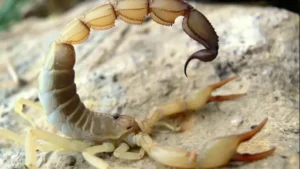
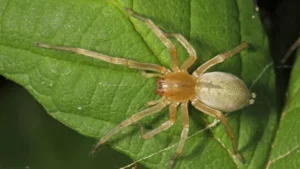
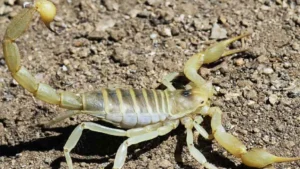

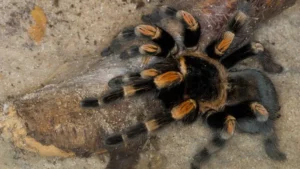

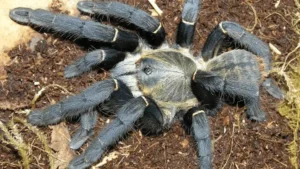
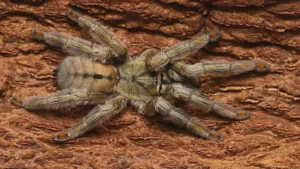

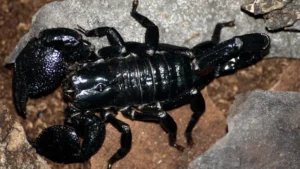
Leave your comment